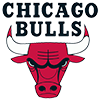Category Scarcity
Typically, the advice in fantasy leagues, especially for the NFBC where there's an overall contest component, is to push up players who produce in scarce categories. The idea is if you don't come away with enough steals or saves, for example, you have no chance to compete in an overall pool where the top teams are strong across the board.
It's true you cannot tank a category in an overall contest -- and you cannot do so even in a standalone league where the bottom third gives up in July, as there will inevitably be teams at the top that are strong everywhere.1 But while tanking is not an option, you are better off being slightly underweight in the scarce categories and overweight in the plentiful ones, especially if others are doing the opposite.
This is counterintuitive, obviously. If the supply of a commodity goes down, doesn't that make it more valuable? Yes, but only if demand remains constant. In real life, an essential commodity like gas or food can have a supply shock without affecting demand, and that will spike the value. But in rotisserie baseball, demand always moves up or down in lockstep with supply. Why? Because instead of needing a certain amount of gas to get from point A to point B, or a certain number of calories to survive, benchmarks set by physics and biology, people need only enough home runs to beat other teams.
Put differently, as the overall supply declines, the amount you need to do well in a category also declines. Conversely, as the supply of home runs increases, your team needs more of them to compete in that category, i.e., the demand increases. Fantasy baseball teams are graded on a relative basis. It would be different if you got a 12 in the home run category for eclipsing some predetermined benchmark, say 250. In that case, you'd absolutely be wise to prioritize the scarce categories. But the benchmark to score well in a category, in our case, moves, with the supply.
Of course, this is separate from the fact that in the case of saves and steals, there are fewer players who contribute than in runs and RBI. There's a real question of if I don't get one of these rare players, will I be de facto tanking the category and prevented from winning. That's a topic to explore in a subsequent article. But realize that league-wide category scarcity alone should not have a major effect on your draft-day strategy.
For overall category scarcity, these tables, taken from the league stats page, is pretty useful:
| Season | G | AB | R | H | 1B | 2B | 3B | HR | RBI | SB | CS | BB | SO | AVG | OBP | SLG | OPS |
| 2020 | 1,796 | 32.87 | 4.64 | 8.04 | 5.05 | 1.57 | 0.13 | 1.28 | 4.44 | 0.49 | 0.16 | 3.39 | 8.68 | 0.245 | 0.321 | 0.418 | 0.739 |
| 2019 | 4,860 | 34.29 | 4.83 | 8.65 | 5.34 | 1.76 | 0.16 | 1.39 | 4.62 | 0.47 | 0.17 | 3.27 | 8.81 | 0.252 | 0.321 | 0.435 | 0.756 |
| 2018 | 4,854 | 34.08 | 4.46 | 8.45 | 5.42 | 1.7 | 0.17 | 1.15 | 4.25 | 0.51 | 0.2 | 3.23 | 8.49 | 0.248 | 0.317 | 0.409 | 0.726 |
| 2017 | 4,860 | 34.07 | 4.65 | 8.69 | 5.54 | 1.73 | 0.16 | 1.26 | 4.44 | 0.52 | 0.19 | 3.26 | 8.25 | 0.255 | 0.323 | 0.426 | 0.749 |
| 2016 | 4,856 | 34.09 | 4.48 | 8.71 | 5.67 | 1.7 | 0.18 | 1.16 | 4.27 | 0.52 | 0.21 | 3.11 | 8.03 | 0.255 | 0.32 | 0.417 | 0.737 |
| 2015 | 4,858 | 34.07 | 4.25 | 8.67 | 5.77 | 1.7 | 0.19 | 1.01 | 4.04 | 0.52 | 0.22 | 2.9 | 7.71 | 0.254 | 0.315 | 0.405 | 0.719 |
| 2014 | 4,860 | 34.08 | 4.07 | 8.56 | 5.85 | 1.67 | 0.17 | 0.86 | 3.86 | 0.57 | 0.21 | 2.88 | 7.7 | 0.251 | 0.311 | 0.386 | 0.698 |
| 2013 | 4,862 | 34.16 | 4.17 | 8.66 | 5.85 | 1.69 | 0.16 | 0.96 | 3.96 | 0.55 | 0.21 | 3.01 | 7.55 | 0.253 | 0.315 | 0.396 | 0.712 |
| Season | G | ERA | WHIP | CG | SHO | SV | HLD | BS | IP | H | R | ER | HR | SO | BB |
| 2020 | 1,796 | 4.45 | 1.33 | 0.02 | 0.01 | 0.23 | 0.48 | 0.14 | 8.2 | 8.04 | 4.65 | 4.26 | 1.28 | 8.68 | 3.39 |
| 2019 | 4,860 | 4.51 | 1.33 | 0.01 | 0.01 | 0.24 | 0.51 | 0.14 | 8 | 8.65 | 4.83 | 4.47 | 1.39 | 8.81 | 3.27 |
| 2018 | 4,854 | 4.15 | 1.3 | 0.01 | 0 | 0.26 | 0.54 | 0.13 | 9 | 8.45 | 4.46 | 4.13 | 1.15 | 8.49 | 3.23 |
| 2017 | 4,860 | 4.36 | 1.34 | 0.01 | 0.01 | 0.24 | 0.51 | 0.12 | 8 | 8.69 | 4.65 | 4.31 | 1.26 | 8.25 | 3.26 |
| 2016 | 4,856 | 4.19 | 1.32 | 0.02 | 0.01 | 0.26 | 0.5 | 0.13 | 8 | 8.71 | 4.48 | 4.15 | 1.16 | 8.03 | 3.11 |
| 2015 | 4,858 | 3.96 | 1.29 | 0.02 | 0.01 | 0.27 | 0.48 | 0.12 | 8 | 8.67 | 4.25 | 3.93 | 1.01 | 7.71 | 2.9 |
| 2014 | 4,860 | 3.74 | 1.28 | 0.02 | 0.01 | 0.26 | 0.47 | 0.11 | 9 | 8.56 | 4.07 | 3.73 | 0.86 | 7.7 | 2.88 |
| 2013 | 4,862 | 3.87 | 1.3 | 0.03 | 0.01 | 0.26 | 0.46 | 0.12 | 9 | 8.66 | 4.17 | 3.86 | 0.96 | 7.55 | 3.01 |
1 In a competitive standalone league, tanking is doable, however.









































